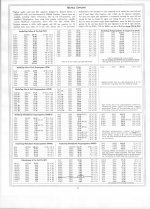No, nothing on the other side (solid ground plane and ground plane stitching vias only). Synthesizer LMX4592 is the big chip at the top right, all gain stages (3) are SOT89. 0201 devices (like the detector diode) are almost invisible at this magnification.
I thought aerospace grade aluminum is the 7000 series. It sounds more shiny compared to the rather dull 6061.
I thought aerospace grade aluminum is the 7000 series. It sounds more shiny compared to the rather dull 6061.
I still don't get it what's so special with PS caps, could someone in layman's terms explain the objective qualities of PS?
The REL polystyrene caps are almost perfect in construction and performance. I tend to use RT, (which is film, tin foil), but Richard's patented RTX might be even better. (you can measure the difference)
However the cost of these caps is not as bad as Dimitri implied. I am showing the price from the latest catalog from Michael Percy Audio where I recommend that you get your difficult to find, but quality audio parts. Here, the cost of a 0.047uf 200V RT 5% tolerance is ONLY $5.45 ea. Richard's improved RTX cap would cost ONLY $8.75 ea. It is the TEFLON equivalent caps that cost in the $35 dollar area. It is best to avoid them, unless you really want to experiment. Yes, I use them in my personal Vendetta Phono Stage, but then I am not a normal audiophile. They sound pretty darn good, but not that much better.
However the cost of these caps is not as bad as Dimitri implied. I am showing the price from the latest catalog from Michael Percy Audio where I recommend that you get your difficult to find, but quality audio parts. Here, the cost of a 0.047uf 200V RT 5% tolerance is ONLY $5.45 ea. Richard's improved RTX cap would cost ONLY $8.75 ea. It is the TEFLON equivalent caps that cost in the $35 dollar area. It is best to avoid them, unless you really want to experiment. Yes, I use them in my personal Vendetta Phono Stage, but then I am not a normal audiophile. They sound pretty darn good, but not that much better.
Attachments
It's a couple of months back I did look around the net and from what I do recall is that PS, while having very low DA, it's still ever so slightly higher than PP, perhaps my neuropathic walnut have things sorted wrong... if that is the case then, are there other qualities besides very low DA that makes PS superior in audio circuits?
scott wurcer:
47Labs' secret for getting the best out of chips.
egads, not the well-known short Rf path combined with: 1000uf only ps caps; ps on either side of the chip (=BIG loop area); no EMI on input or output, 12 res series ladder attn on input; DC coupling in/out;
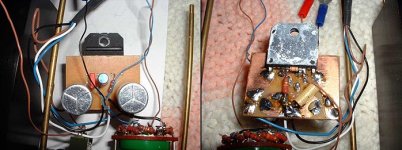
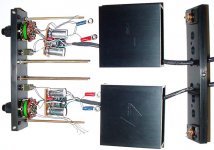
Meh 🙄
Tom smoked the LM3XXX:
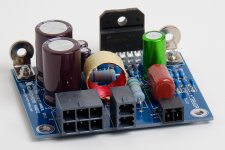
LM3886 Done Right
🙂
47Labs' secret for getting the best out of chips.
I did it the same way after that 47Labs said that, soldered the feedback resistor directly on the chip legs. That was a long time ago.
egads, not the well-known short Rf path combined with: 1000uf only ps caps; ps on either side of the chip (=BIG loop area); no EMI on input or output, 12 res series ladder attn on input; DC coupling in/out;


Meh 🙄
Tom smoked the LM3XXX:

LM3886 Done Right
🙂
Last edited:
I thought aerospace grade aluminum is the 7000 series. It sounds more shiny compared to the rather dull 6061.
Obviously I was being tongue in cheek. There are 2000, 6000, 7000 series aluminums that are "aircraft grade." For whatever it's worth, but yes primarily 7070/7075. The higher corrosion resistance of 2024 gives music a lovely liquidity.
Yeah, and an output coil on board, close to the input circuitry, that makes me cringe each time I see one. Who cares about magnetic induced second harmonic, it’s not audible, anyway. But careful with the power cords, and don’t forget the silver wiring, those are clearly audible.
Enough said...
P.S. $250/hour for audio design consulting, **** I’m in the wrong business.
Last edited:
The reason for the decline in polystyrene availability may have to do with the introduction of C0G ceramic and the dominance of surface mount construction. Not sure they handle heat very well. Same is true for other films but PS appear to have the lowest max operating temperatures.
It doesn't have much of a place in the market now. C0G is pretty much as good as PS and has improved physical robustness and lower inductance packages.
Were there some EU environmental restrictions on polystyrene also?
It doesn't have much of a place in the market now. C0G is pretty much as good as PS and has improved physical robustness and lower inductance packages.
Were there some EU environmental restrictions on polystyrene also?
The polystyrene caps are the best, overall, for audio, unless you want to experiment. Because they are always film and foil, very low DA, and can be solidly constructed to not mechanically resonate easily, but there are differences in different manufacturers with lead connections , etc, so REL seems to offer the best that we have found, but there are other manufacturers, just as good, but I do not know them. Just don't waste your time trying different cap manufacturers, unless that is all you want to do.
Yeah, and an output coil on board, close to the input circuitry, that makes me cringe each time I see one. Who cares about magnetic induced second harmonic, it’s not audible, anyway. But careful with the power cords, and don’t forget the silver wiring, those are clearly audible.
Enough said...
Where are your fears?
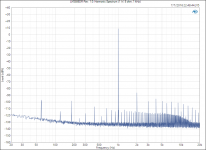
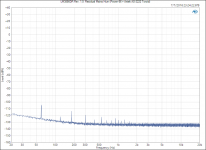
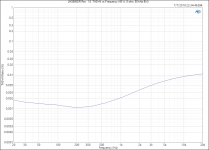
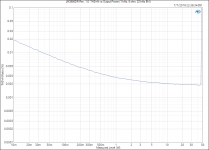
Not here? Surely?

Last edited:
Anything.
The 2134 is really low noise so it has that going for it in a phono preamp, but it's also boring. I've stuck the LME49720HA in place of them in a phono stage before. Yes the noise is worse. But my music wasn't dead sounding, so I could enjoy it.
134/2134 makes a good servo chip, that is what I have been using it for over ten years. If you must use it for audio, and I try not too, if ever, stick a small Fet CS on the O/P helps, just as Terry said.
Quoting over 10 piece prices for DIY is misleading, I insist on respecting the means of the average person working in their garage/basement.
Mouser has them at this price for just one and in stock. They are under a buck at ten quantity for some. Much better form factor than the Rels also.
Try again to scare me; THD @1KHz 80kHz BW 1W output power appears to be the same (0.002%, or -94dB) as the THD+N @1KHz 80KHz BW 45W output power. Noise appears to be negligible in your measurements, so that’s not it.
Meantime, it doesn’t pass the smell test, I’m not buying claims significantly better than the data sheet spec.
Last edited:
There are better parts available now from TI and one in particular has specifically very low CM distortion due to IP cap modulation... T
When you remember, got me curious which one?
Try again to scare me; THD @1KHz 80kHz BW 1W output power appears to be the same (0.002%, or -94dB) as the THD+N @1KHz 80KHz BW 45W output power. Noise appears to be negligible in your measurements, so that’s not it.
Meantime, it doesn’t pass the smell test, I’m not buying claims significantly better than the data sheet spec.
Design an amp and show it. You've let off enough hot steam to power a river boat.
Try again to scare me; THD @1KHz 80kHz BW 1W output power appears to be the same (0.002%, or -94dB) as the THD+N @1KHz 80KHz BW 45W output power. Noise appears to be negligible in your measurements, so that’s not it.
Meantime, it doesn’t pass the smell test, I’m not buying claims significantly better than the data sheet spec.
Waly, Tom's amps are composite amplifiers. The newest iteration uses OPA1611 with the LM3886 in the feedback loop.
- Status
- Not open for further replies.
- Home
- Member Areas
- The Lounge
- John Curl's Blowtorch preamplifier part III
